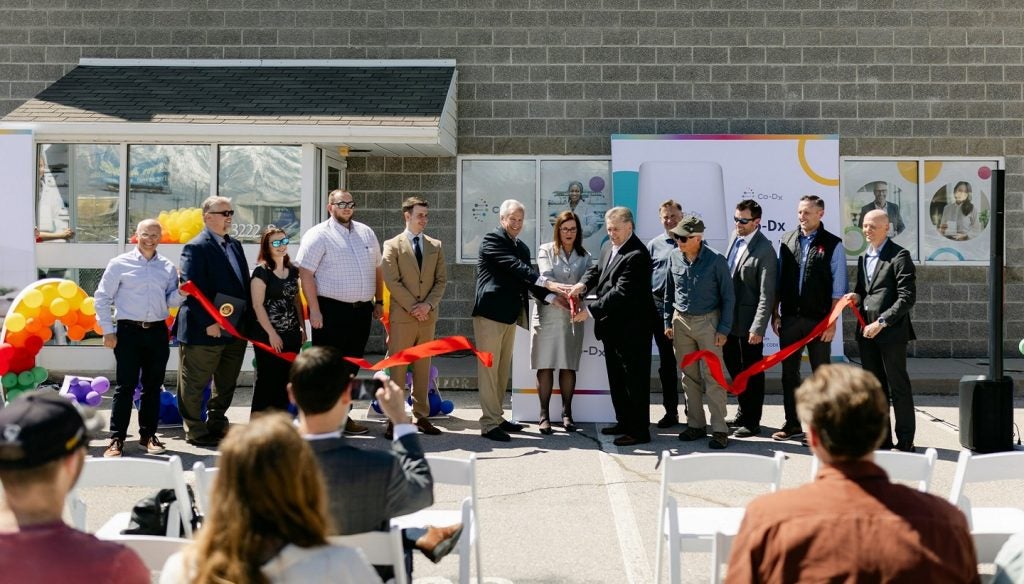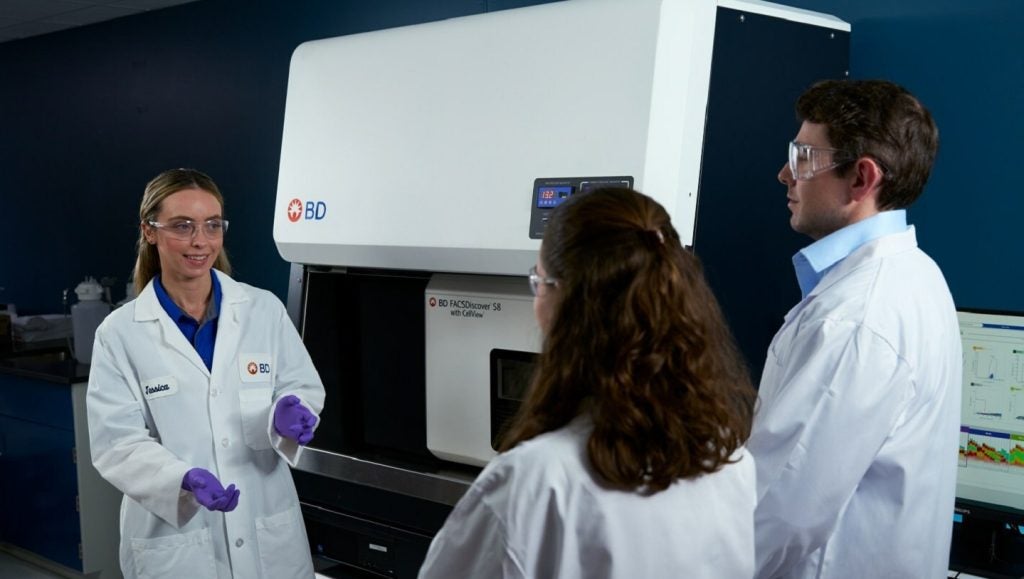
The past few years have seen huge growth in the introduction of nanotechnology across a wide field of medical technologies. The numerous applications for nanotechnology range from advances in materials science to biomedicine; from diagnosis to the treatment of cancer and other major diseases; and from completely new types of product to advances in manufacturing processes.
With the science and innovation, however, have come a number of challenges in bringing medical nanotechnology to the patient.
NEW TREATMENT HORIZONS
Science at the nano-scale (generally considered to be between 1nm and 100nm) is not new. What is relatively new, however, is our ability to manipulate matter precisely at the nano-scale, thereby creating new types of materials and miniaturising mechanisms and machines.
The following are just a few examples of areas where nanotechnology is being applied in medicine to develop new generations of devices or therapies:
See Also:
- ‘Smart’ medical materials: including nano-textured or nano-treated surfaces and scaffolds that promote cell growth in tissue engineering; nano-textured surfaces for use as biosensors; nano-structured systems for drug delivery; nano-structures for DNA microarrays; novel model membranes; nano-structured sensors assembled from carbon nano-tubes; and nano-modified materials to impart desirable mechanical properties
- Diagnosis: bio-organic nano-probes for tumour imaging and other types of ‘smart’ imaging agents; nano-engineered micro- or nano-fluidic diagnostic chips that allow pico- and nano-litre quantities of reagents to be used; proteomics chips; micro-electro-mechanical systems (MEMS); integrated chips; and smart diagnostic ‘tags’
- Drugs: nano-encapsulated or coated drugs, (which can, for example, penetrate the ‘leaky’ angiogenesis of solid tumours or that can be targeted using attached antibodies or lymphocytes)
- Novel medical devices: nano-engineered structures at electrode-tissue interfaces (for example, in the development of retinal implants); nano-actuators; nano-coated implants; nano-modified surfaces, for a wide variety of devices and uses
It is likely that, in the foreseeable future, the application of nanotechnology in these and other areas will offer the possibility of a wide range of novel and highly effective new methods of diagnosis and treatment, and new drugs, devices and therapies for patients. However, a series of challenges will also come with these new technologies.
How well do you really know your competitors?
Access the most comprehensive Company Profiles on the market, powered by GlobalData. Save hours of research. Gain competitive edge.

Thank you!
Your download email will arrive shortly
Not ready to buy yet? Download a free sample
We are confident about the unique quality of our Company Profiles. However, we want you to make the most beneficial decision for your business, so we offer a free sample that you can download by submitting the below form
By GlobalDataTHE CHALLENGES AHEAD
It seems likely that, rather than creating a completely new regulatory environment for nanomedicine, legislators in Europe will regulate nanotechnological medical products under the existing regulatory directives, wherever possible. These are the Active Implantable Medical Device Directive (90/385/EEC), the Medical Device Directive (93/42/EEC), the In-Vitro Diagnostic Medical Device Directive (98/79/EC), and the Medicinal Products Directive (2004/27/EC).
This seems a logical step, but none of these directives were written with nanotechnology in mind, and they may need to be revised to take account of specific risks particular to nanotechnology products.
For example, the Medical Device Directive (MDD), as a ‘new approach’ directive, is supported by ‘harmonised’ European standards. These standards include a series on biological safety (the EN ISO 10993 series), which is likely to be a key issue with products based on nanotechnology. However, none of the biocompatibility tests in this series have been drafted with nanotechnology products in mind. The revision of at least some current standards appears necessary.
A further problem may be caused by the tendency for nanotechnology to blur the traditional boundaries between different regulatory systems. Many novel products incorporating nanotechnology may be hybrid. For example, they may act as an imaging agent, a diagnostic or a drug, or they may facilitate the way medicinal effects are incorporated into an implanted medical device. Hybrid products may not readily fall into one specific regulatory system, and regulators need to address the fact that the number of such products will grow.
THE NEED FOR REIMBURSEMENT
There may be many years between the initial concept of a novel product and bringing it to market, during which time the innovator has no income from that product. Medical technology manufacturers are already struggling with the dilemma of whether or not they will be reimbursed by public or private healthcare providers for nanotechnology products. If there are uncertainties over reimbursement, this will certainly be an additional factor for the manufacturer to consider. It could, at worst, be a disincentive to investment in R&D.
Currently, reimbursement schemes vary widely from country to country. There is tremendous pressure on limited healthcare resources because of budgetary constraints coupled with the financial strain of an ageing European population. Reimbursement levels have been reduced in some countries, and in others new-technology device development costs are not reimbursed. Innovation will be badly hindered unless adequate and equitable reimbursement schemes are fostered. This is an issue that the medical technology industry and national governments must address.
ASSESSMENT SCHEMES
Healthcare technology assessment (HTA) schemes have gained popularity as a way of evaluating new types of product. This evaluation can assess the implications of a product from an ethical, economic or other point of view.
The overall objective is generally cited as being to provide solid and objective grounds for decision-making on the provision and funding of healthcare. HTA schemes have rapidly gained importance in the EU as members try to apply their limited healthcare budgets more effectively. Some commentators have suggested that HTA schemes could be a useful tool for encouraging innovation. However, others feel that HTA schemes have been used as a political tool.
Either way, it seems likely that the HTA, as a tool, is here to stay. The challenge for the medical technology industry will be to ensure that it is used in a positive way and that it is applied to nanotechnology-based products. It is also important to adopt a holistic view of treatment, based on early detection, improved prognosis and allowing the patient to return to society early, rather than a short-term economic approach.
RISK MANAGEMENT
Manufacturers will need to address the perceived risks of nanotechnology if they are to have them taken up by medical professionals and patients. There has been considerable media attention in the UK on nanotechnology, following comments made by Prince Charles on the subject and the subsequent report initiated by the Royal Society. Similarly, in the European parliament, one MEP has called for a moratorium on the commercial production of nanotechnology until we can establish a regulatory framework.
Whatever one may think of these views from a scientific standpoint, they echo the genuine fears many members of the public have about the risks of nanotechnology. Many of these fears are firmly in the sphere of science fiction, but science will have to address concerns about the ability of nano-particles to spread around the body and pass through the blood-brain barrier, and about possible toxicity or biological safety issues.
For a public sensitised by issues such as GM foods and BSE and wary of science and industry, thorough risk analysis and management together with good communication about the possible risks and benefits of nanotechnology-based medical products will be absolutely essential.
PERSUADING THE PROFESSIONALS
The level of uptake of novel nanotechnology-based products and treatments by doctors will be crucial to their ultimate success, and the attitudes of medical professionals towards novel technologies often vary from country to country and may be rooted in cultural and educational factors as well as local medical practices. Working with professional medical societies and organisations and effective networking with medical professionals will be essential if they are to be convinced of the value and benefits of nanotechnology-based medical products.
ENCOURAGING INNOVATIVE FRAMEWORKS
In mid-2004, the European Commission consulted on improving innovation in Europe. Subsequently, it circulated a questionnaire aimed at establishing priorities for the forthcoming 7th Framework Programme (FP7). Nanotechnology is already a key priority in the current 6th Framework Programme (FP6), but despite these initiatives, Europe is still lagging behind the USA and some other regions in terms of research.
The medical technology industry believes that the infrastructure for supporting medical technology research, including research into nanotechnology, in Europe can be strengthened by better targeting of research funding to address major societal healthcare problems, better networking, better support in terms of data and information, better intellectual property protection and improved access to research programmes.
It also believes that the environment for investment in innovation could be improved. For example, better regulatory clarity, clearer expectations of eventual reimbursement and other tools, such as fiscal incentives for innovation, should be considered.
EXCITING PROSPECTS
The future for nanotechnology in medicine looks exciting, with new medical treatments and products offering greatly improved outcomes and benefits to patients likely. However, to ensure that these developments are brought to market and made accessible to society, many challenges have to be overcome. Nanotechnology innovators should take their cue from Goethe who said that daring ideas are like chessmen: moved forward, they may be beaten, but they can also start a winning game.







